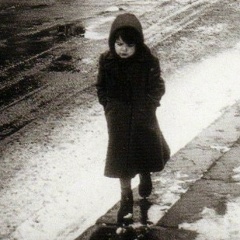О создании «Крёстного Отца» Ф. Ф. Коппoлы
Три штриха к портрету фильма в честь 45-летия со дня премьеры
Криминальная драма Фрэнсиса Форда Копполы не просто приобрела культовый статус, но стала одной из самых значимых вех в истории американского и мирового кинематографа, без преувеличения, обессмертив имена причастных.
За прошедшие со дня премьеры годы фильм подвергался тщательному изучению в попытках объяснить причину его феноменального и немеркнущего успеха. Ведь ещё на стадии пре-продакшена экранизация одноимённого романа Марио Пьюзо вовсе не выглядела многообещающим проектом, сулившим принести славу и прибыль.
Судите сами.
Режиссёром ленты стал независимый постановщик, до этого снимавший дешёвенькие фильмы и работавший с Роджером Корманом - знаменитым Голливудским трэшеделом. Резюме Копполы украшала, "всего лишь", премия Оскар за адаптированный сценарий фильма "Паттон". Но вовсе не это убедило студию отдать проект в его руки. В какой-то момент его едва не заменили на другого постановщика: среди возможных режиссёров "на замену" звучали очень солидные имена - например, Артура Пенна, двукратного номинанта на Оскар за режиссуру, снявшего легендарный "Бонни и Клайд". И всё же фортуна улыбнулась Фрэнсису. Вернее, его молодости. В начале '70-ых ему было чуть за 30 и продюсеры решили, что смогут с лёгкостью помыкать им.
С поиском актёров на главные роли тоже сложилось не сразу.
Например, студия наотрез отказывалась утверждать на роль Дона Корлеоне Марлона Брандо. Актёр славился тяжёлым характером, неуживчивостью и сложными отношениями с коллегами на съёмочной площадке. Казалось бы, Коппола должен был об этом знать и предпочесть кого другого. Тем более, что интерес к роли проявлял сам Орсон Уэллс. Продюсеры отыскали ещё 7 претендентов, лишь бы не работать с Брандо. Но с момента прочтения книги Коппола видел в образе Дона только его. Чтобы добиться расположения начальства, он пошёл на хитрость. Зная, что Брандо не согласится на обычные пробы, он прихватил ручную камеру и приехал к актёру домой, сказав, что хочет кое-что попробовать. Брандо встретил его в кимоно и с причёсанными назад длинными волосами. Согласно легенде, когда Коппола включил камеру, Марлон взял обувную ваксу и вымазал свои седые волосы в чёрный цвет, а за обе щёки положил по ватной салфетке. Затем он взял сигару и стал что-то бормотать. Когда Коппола показал плёнку руководству – никто (включая директора студии Стэнли Джаффе, клявшегося, что пока он руководит кинокомпанией, Брандо не видать роли) не узнал актёра.
Аль Пачино был не менее нежеланным. На тот момент в его фильмографии было всего две картины и лишь одна главная роль: студийные боссы сомневались, что он справится с задачей. Сомневался и сам Коппола: на записях с кинопроб Пачино выглядел стушёванным и растерянным, совсем не таким, каким видится сын Мафии. Копполе очень нравилось его лицо, но он всё же был вынужден параллельно заняться поиском других актёров. Так в его поле зрения попал Роберт Де Ниро и Мартин Шин. Оба ещё поработают с режиссёром в его следующих фильмах, но образ Майкла Корлеоне всё же достался Пачино. И, возможно, последнее слово в его утверждении принадлежит Марше Лукас (тогдашней супруге Джорджа Лукаса). Занимаясь монтажом плёнки с кинопроб, она обратила внимание Фрэнсиса, что Пачино «раздевает вас своими глазами». Коппола уцепился за это наблюдение и вновь убедил студию встать на его сторону.
К слову о Лукасе.
Коппола и Джордж Лукас дружат уже многие десятилетия и свои первые шаги в индустрии делали вместе. Фрэнсис, например, выступал исполнительным продюсером фантастической антиутопии «THX 1138» – дебютного фильма Джорджа. Но мало кто знает, что Лукас участвовал в создании «Крёстного Отца». В фильме есть сцены, где появляются газеты с громкими заголовками, освещающими главные события, в том числе смерть титульных героев. Эти вставки сняты именно Лукасом.
Третьим и самым ярким подтверждением жизненно важной необходимости прислушиваться к чутью, стала сцена с лошадиной головой.
Кровавая, яркая, запредельно жестокая, сцена стала хрестоматийной и обыгралась бесчисленное множество раз в других произведениях, став, наряду с апельсинами, одной из визиток «Крёстного отца». Но после просмотра фильма у зрителей возник закономерный вопрос: а была ли голова настоящая? Да, была. Студия предлагала использовать чучело, но Копполе оно показалось неубедительным. Тогда он связался с фермой в Нью-Джерси, занимающейся убоем лошадей для изготовления собачьих консервов, и попросил прислать ему голову. Какое-то время спустя ему доставили ящик со льдом, в котором лежала голова.
Отстояв своё авторское видение, Коппола сумел создать выдающееся кинополотно, без преувеличения, икону жанра. В год выхода на экраны, «Крёстный отец» стал не только самым кассовым фильмом года, но и (на тот момент) самой коммерчески успешной лентой всех времён. В 1990-ом году библиотека Конгресса США внесла фильм в список лент, имеющих культурное, историческое и эстетическое значение.
Вероятно, в Конгресс всё же поступило предложение, от которого там не смогли отказаться.
via: http://drugoe-kino.livejournal.com/3240205.html?style=mine#comments
Три штриха к портрету фильма в честь 45-летия со дня премьеры
Криминальная драма Фрэнсиса Форда Копполы не просто приобрела культовый статус, но стала одной из самых значимых вех в истории американского и мирового кинематографа, без преувеличения, обессмертив имена причастных.
За прошедшие со дня премьеры годы фильм подвергался тщательному изучению в попытках объяснить причину его феноменального и немеркнущего успеха. Ведь ещё на стадии пре-продакшена экранизация одноимённого романа Марио Пьюзо вовсе не выглядела многообещающим проектом, сулившим принести славу и прибыль.
Судите сами.
Режиссёром ленты стал независимый постановщик, до этого снимавший дешёвенькие фильмы и работавший с Роджером Корманом - знаменитым Голливудским трэшеделом. Резюме Копполы украшала, "всего лишь", премия Оскар за адаптированный сценарий фильма "Паттон". Но вовсе не это убедило студию отдать проект в его руки. В какой-то момент его едва не заменили на другого постановщика: среди возможных режиссёров "на замену" звучали очень солидные имена - например, Артура Пенна, двукратного номинанта на Оскар за режиссуру, снявшего легендарный "Бонни и Клайд". И всё же фортуна улыбнулась Фрэнсису. Вернее, его молодости. В начале '70-ых ему было чуть за 30 и продюсеры решили, что смогут с лёгкостью помыкать им.
С поиском актёров на главные роли тоже сложилось не сразу.
Например, студия наотрез отказывалась утверждать на роль Дона Корлеоне Марлона Брандо. Актёр славился тяжёлым характером, неуживчивостью и сложными отношениями с коллегами на съёмочной площадке. Казалось бы, Коппола должен был об этом знать и предпочесть кого другого. Тем более, что интерес к роли проявлял сам Орсон Уэллс. Продюсеры отыскали ещё 7 претендентов, лишь бы не работать с Брандо. Но с момента прочтения книги Коппола видел в образе Дона только его. Чтобы добиться расположения начальства, он пошёл на хитрость. Зная, что Брандо не согласится на обычные пробы, он прихватил ручную камеру и приехал к актёру домой, сказав, что хочет кое-что попробовать. Брандо встретил его в кимоно и с причёсанными назад длинными волосами. Согласно легенде, когда Коппола включил камеру, Марлон взял обувную ваксу и вымазал свои седые волосы в чёрный цвет, а за обе щёки положил по ватной салфетке. Затем он взял сигару и стал что-то бормотать. Когда Коппола показал плёнку руководству – никто (включая директора студии Стэнли Джаффе, клявшегося, что пока он руководит кинокомпанией, Брандо не видать роли) не узнал актёра.
Аль Пачино был не менее нежеланным. На тот момент в его фильмографии было всего две картины и лишь одна главная роль: студийные боссы сомневались, что он справится с задачей. Сомневался и сам Коппола: на записях с кинопроб Пачино выглядел стушёванным и растерянным, совсем не таким, каким видится сын Мафии. Копполе очень нравилось его лицо, но он всё же был вынужден параллельно заняться поиском других актёров. Так в его поле зрения попал Роберт Де Ниро и Мартин Шин. Оба ещё поработают с режиссёром в его следующих фильмах, но образ Майкла Корлеоне всё же достался Пачино. И, возможно, последнее слово в его утверждении принадлежит Марше Лукас (тогдашней супруге Джорджа Лукаса). Занимаясь монтажом плёнки с кинопроб, она обратила внимание Фрэнсиса, что Пачино «раздевает вас своими глазами». Коппола уцепился за это наблюдение и вновь убедил студию встать на его сторону.
К слову о Лукасе.
Коппола и Джордж Лукас дружат уже многие десятилетия и свои первые шаги в индустрии делали вместе. Фрэнсис, например, выступал исполнительным продюсером фантастической антиутопии «THX 1138» – дебютного фильма Джорджа. Но мало кто знает, что Лукас участвовал в создании «Крёстного Отца». В фильме есть сцены, где появляются газеты с громкими заголовками, освещающими главные события, в том числе смерть титульных героев. Эти вставки сняты именно Лукасом.
Третьим и самым ярким подтверждением жизненно важной необходимости прислушиваться к чутью, стала сцена с лошадиной головой.
Кровавая, яркая, запредельно жестокая, сцена стала хрестоматийной и обыгралась бесчисленное множество раз в других произведениях, став, наряду с апельсинами, одной из визиток «Крёстного отца». Но после просмотра фильма у зрителей возник закономерный вопрос: а была ли голова настоящая? Да, была. Студия предлагала использовать чучело, но Копполе оно показалось неубедительным. Тогда он связался с фермой в Нью-Джерси, занимающейся убоем лошадей для изготовления собачьих консервов, и попросил прислать ему голову. Какое-то время спустя ему доставили ящик со льдом, в котором лежала голова.
Отстояв своё авторское видение, Коппола сумел создать выдающееся кинополотно, без преувеличения, икону жанра. В год выхода на экраны, «Крёстный отец» стал не только самым кассовым фильмом года, но и (на тот момент) самой коммерчески успешной лентой всех времён. В 1990-ом году библиотека Конгресса США внесла фильм в список лент, имеющих культурное, историческое и эстетическое значение.
Вероятно, в Конгресс всё же поступило предложение, от которого там не смогли отказаться.
via: http://drugoe-kino.livejournal.com/3240205.html?style=mine#comments
On the Creation of the “Godfather” by F. F. Coppola
Three strokes for the portrait of the film in honor of the 45th anniversary of the premiere
The crime drama by Francis Ford Coppola not only acquired cult status, but became one of the most significant milestones in the history of American and world cinema, without exaggeration, immortalizing the names of those involved.
Over the years since the premiere, the film has been carefully studied in an attempt to explain the reason for its phenomenal and unfading success. After all, even at the pre-production stage, the film adaptation of the novel of the same name by Mario Puzo did not at all look like a promising project that promised to bring fame and profit.
Judge for yourself.
The director of the tape was an independent director, who had previously shot cheap films and worked with Roger Corman - the famous Hollywood thrash piece. Coppola's resume was adorned, "just," with an Oscar for the adapted script for the movie Patton. But it was not at all that convinced the studio to give the project into his hands. At some point, he was almost replaced with another director: among the possible directors for “replacement” sounded very respectable names - for example, Arthur Penn, two-time Oscar nominee for the director who directed the legendary “Bonnie and Clyde”. Yet fortune smiled at Francis. Rather, his youth. In the early '70s, he was just over 30 and the producers decided that they could easily push him around.
With the search for actors for the main roles, it did not happen right away either.
For example, the studio flatly refused to claim the role of Don Corleone Marlon Brando. The actor was famous for his heavy character, rudeness and difficult relationships with colleagues on the set. It would seem that Coppola should have known about this and preferred someone else. Moreover, Orson Welles himself showed interest in the role. The producers found another 7 applicants, just not to work with Brando. But from the moment of reading the book Coppola saw in the image of Don only him. To achieve the disposition of his superiors, he went on a trick. Knowing that Brando would not agree to the usual tests, he grabbed a hand-held camera and came to the actor’s home, saying that he wanted to try something. Brando met him in a kimono and with long hair combed back. According to legend, when Coppola turned on the camera, Marlon took a shoe wax and smeared his gray hair in black, and put a cotton towel on both cheeks. Then he took a cigar and began to mutter something. When Coppola showed the film to the management - no one (including the director of the studio, Stanley Jaffe, swearing that while he runs the film company, Brando did not see the role) did not recognize the actor.
Al Pacino was no less unwelcome. At that time, in his filmography there were only two films and only one main role: studio bosses doubted that he would cope with the task. Coppola himself doubted: on the recordings of the film screening, Pacino looked puzzled and confused, not at all what the son of the Mafia sees. Coppola really liked his face, but he was still forced to simultaneously search for other actors. So Robert De Niro and Martin Sheen came into his field of vision. Both will still work with the director in his next films, but Pacino still got the image of Michael Corleone. And perhaps the last word in his statement belongs to Marche Lucas (then-wife of George Lucas). While editing film from a film test, she drew Francis' attention that Pacino "undresses you with his own eyes." Coppola clung to this observation and again convinced the studio to take his side.
Speaking of Lucas.
Coppola and George Lucas have been friends for many decades and took their first steps in the industry together. Francis, for example, was the executive producer of the fantastic dystopian THX 1138, George's debut film. But few people know that Lucas participated in the creation of the Godfather. There are scenes in the film where newspapers appear with loud headlines covering major events, including the death of the title characters. These inserts were shot by Lucas.
The third and most striking confirmation of the vital need to listen to intuition was the scene with a horse's head.
Bloody, bright, extremely cruel, the scene became a textbook and was played countless times in other works, becoming, along with oranges, one of the cards of The Godfather. But after watching the film, the audience had a logical question: was there a real head? Yes there was. The studio proposed the use of a scarecrow, but to Coppola it seemed unconvincing. Then he contacted a farm in New Jersey, engaged in the slaughter of horses for the manufacture of canned dog, and asked to send him a head. Some time later, a box of ice was brought to him, in which his head lay.
Having defended his author’s vision, Coppola managed to create an outstanding film canvas, without exaggeration, an icon of the genre. In the year it was released, The Godfather was not only the highest grossing film of the year, but (at that time) the most commercially successful film of all time. In the 1990s, the Library of Congress entered the film into a list of tapes of cultural, historical, and aesthetic value.
Probably to Congress
Three strokes for the portrait of the film in honor of the 45th anniversary of the premiere
The crime drama by Francis Ford Coppola not only acquired cult status, but became one of the most significant milestones in the history of American and world cinema, without exaggeration, immortalizing the names of those involved.
Over the years since the premiere, the film has been carefully studied in an attempt to explain the reason for its phenomenal and unfading success. After all, even at the pre-production stage, the film adaptation of the novel of the same name by Mario Puzo did not at all look like a promising project that promised to bring fame and profit.
Judge for yourself.
The director of the tape was an independent director, who had previously shot cheap films and worked with Roger Corman - the famous Hollywood thrash piece. Coppola's resume was adorned, "just," with an Oscar for the adapted script for the movie Patton. But it was not at all that convinced the studio to give the project into his hands. At some point, he was almost replaced with another director: among the possible directors for “replacement” sounded very respectable names - for example, Arthur Penn, two-time Oscar nominee for the director who directed the legendary “Bonnie and Clyde”. Yet fortune smiled at Francis. Rather, his youth. In the early '70s, he was just over 30 and the producers decided that they could easily push him around.
With the search for actors for the main roles, it did not happen right away either.
For example, the studio flatly refused to claim the role of Don Corleone Marlon Brando. The actor was famous for his heavy character, rudeness and difficult relationships with colleagues on the set. It would seem that Coppola should have known about this and preferred someone else. Moreover, Orson Welles himself showed interest in the role. The producers found another 7 applicants, just not to work with Brando. But from the moment of reading the book Coppola saw in the image of Don only him. To achieve the disposition of his superiors, he went on a trick. Knowing that Brando would not agree to the usual tests, he grabbed a hand-held camera and came to the actor’s home, saying that he wanted to try something. Brando met him in a kimono and with long hair combed back. According to legend, when Coppola turned on the camera, Marlon took a shoe wax and smeared his gray hair in black, and put a cotton towel on both cheeks. Then he took a cigar and began to mutter something. When Coppola showed the film to the management - no one (including the director of the studio, Stanley Jaffe, swearing that while he runs the film company, Brando did not see the role) did not recognize the actor.
Al Pacino was no less unwelcome. At that time, in his filmography there were only two films and only one main role: studio bosses doubted that he would cope with the task. Coppola himself doubted: on the recordings of the film screening, Pacino looked puzzled and confused, not at all what the son of the Mafia sees. Coppola really liked his face, but he was still forced to simultaneously search for other actors. So Robert De Niro and Martin Sheen came into his field of vision. Both will still work with the director in his next films, but Pacino still got the image of Michael Corleone. And perhaps the last word in his statement belongs to Marche Lucas (then-wife of George Lucas). While editing film from a film test, she drew Francis' attention that Pacino "undresses you with his own eyes." Coppola clung to this observation and again convinced the studio to take his side.
Speaking of Lucas.
Coppola and George Lucas have been friends for many decades and took their first steps in the industry together. Francis, for example, was the executive producer of the fantastic dystopian THX 1138, George's debut film. But few people know that Lucas participated in the creation of the Godfather. There are scenes in the film where newspapers appear with loud headlines covering major events, including the death of the title characters. These inserts were shot by Lucas.
The third and most striking confirmation of the vital need to listen to intuition was the scene with a horse's head.
Bloody, bright, extremely cruel, the scene became a textbook and was played countless times in other works, becoming, along with oranges, one of the cards of The Godfather. But after watching the film, the audience had a logical question: was there a real head? Yes there was. The studio proposed the use of a scarecrow, but to Coppola it seemed unconvincing. Then he contacted a farm in New Jersey, engaged in the slaughter of horses for the manufacture of canned dog, and asked to send him a head. Some time later, a box of ice was brought to him, in which his head lay.
Having defended his author’s vision, Coppola managed to create an outstanding film canvas, without exaggeration, an icon of the genre. In the year it was released, The Godfather was not only the highest grossing film of the year, but (at that time) the most commercially successful film of all time. In the 1990s, the Library of Congress entered the film into a list of tapes of cultural, historical, and aesthetic value.
Probably to Congress





У записи 12 лайков,
1 репостов,
508 просмотров.
1 репостов,
508 просмотров.
Эту запись оставил(а) на своей стене Максим Жерновой
































